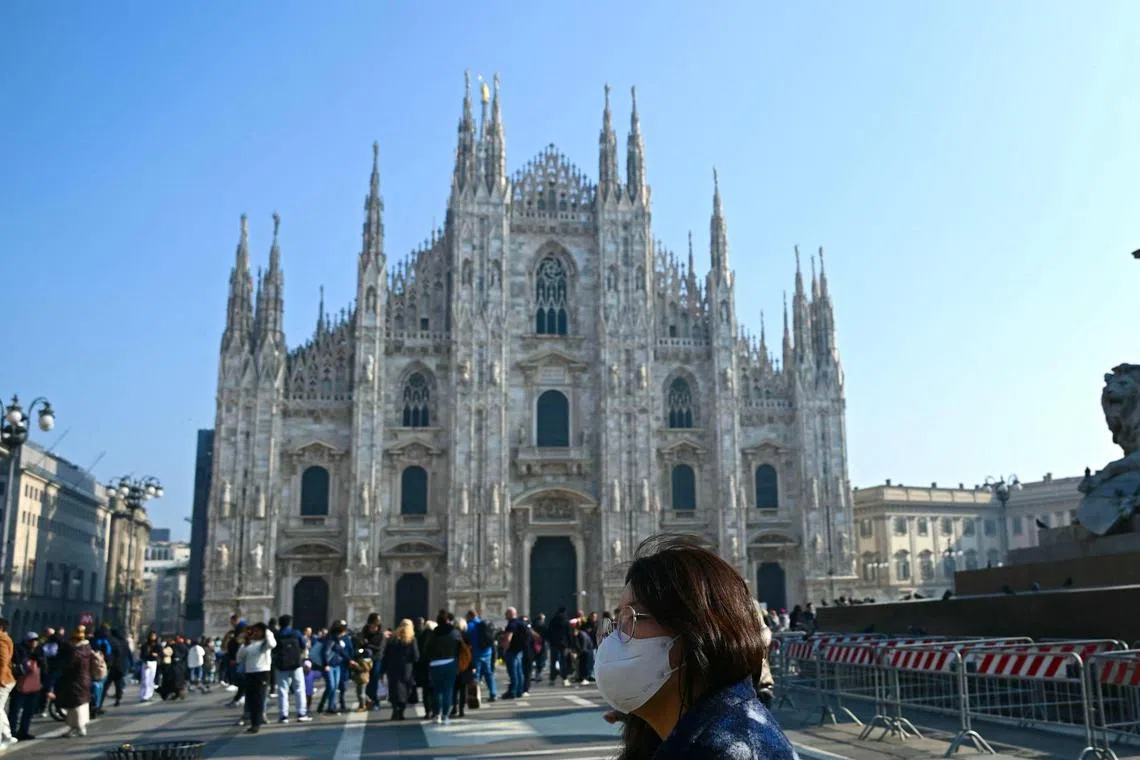Lack of rain leaves Italy gasping
Sign up now: Get ST's newsletters delivered to your inbox

Gas-guzzling cars have been banned from roads in Milan and eight other cities across Italy's Lombardy region, after the northern Italian industrial region registered high levels of particle pollution.
PHOTO: AFP
Follow topic:
ROME – A blanket of smog covers Milan, empty reservoirs bake in Sicily and wine production is down in Piedmont as a lack of rain across Italy exacerbates pollution and sparks droughts.
Gas-guzzling cars were banned from roads on Feb 20 in Milan and eight other cities across Lombardy after the northern Italian industrial region registered high levels of particle pollution that is dangerous for health.
“The levels of smog have become intolerable,” 60-year-old resident Sergio, who has lived around Milan for the past 36 years, told AFPTV.
The high levels are due to three factors, according to Italian environmental group Legambiente: road transport emissions, the heating of homes and the agriculture sector.
The region, home to many intensive livestock farms, banned the customary spraying of animal waste onto fields, a practice known to cause air pollution.
Legambiente expert Andrea Minutolo told AFP it was no coincidence the air pollution levels had risen in February, as a month-long ban in the region on spraying waste had been lifted at the end of January.
“The sky is grey even if it’s a cloudless day. The quality of air in Milan has never been very good, now it’s disgusting,” said Mr Paolo Ciacco, 22, who said he was considering wearing a mask.
Northern Italy has ranked among the most polluted areas in Europe for many years.
Part of Lombardy’s problem is geographic – it sits in a basin between mountains, which means it is poorly ventilated.
But clean air campaigners say this handicap is too often used as an excuse by the authorities for high levels of air pollution.
High particulate levels were also registered in the capital, Rome.
Bees waking up early
Regions across Italy are suffering drought or severe lack of rainfall.
Snow levels were down in both the Alps and Apennines.
The Italian snow water equivalent – the equivalent amount of water stored in the snow pack – is down 64 per cent in February compared with a year earlier, according to the Cima Research Foundation.

Milan’s Velasca Tower shrouded in smog on Feb 20.
PHOTO: REUTERS
The lack of rainfall is aggravating an already difficult situation, following heatwaves in 2023 that lowered reservoir levels and drove up water consumption.
Sicily declared a natural disaster over drought earlier in February, while on the island of Sardinia, farmers are limited in terms of how much water they can use.
Reservoir levels there are down 23 per cent compared with the average over the last 14 years.
The southern regions of Puglia and Basilicata are also suffering, with farmers’ association Coldiretti warning at the weekend that warm temperatures have woken thousands of bees early from their winter slumber.
This threatens the pollination of some crops because the bees are out of sync with the flowering period of plants from which they gather pollen.

People skiing down a slope covered with artificial snow in Artesina, a small ski resort in north-western Italy, amid a lack of snowfall.
PHOTO: AFP
Meanwhile, Piedmont in the north-west asked the Agricultural Ministry on Feb 19 to declare a natural disaster for drought in the region, saying it has affected vineyards and caused “significant” drops in wine production.
Experts say climate change driven by human activity is boosting the intensity and frequency of extreme weather events, such as heatwaves, droughts and wildfires.
Planet-heating emissions, mainly from the burning of fossil fuels, have risen in recent years. Scientists say they need to fall by almost half this decade. AFP

